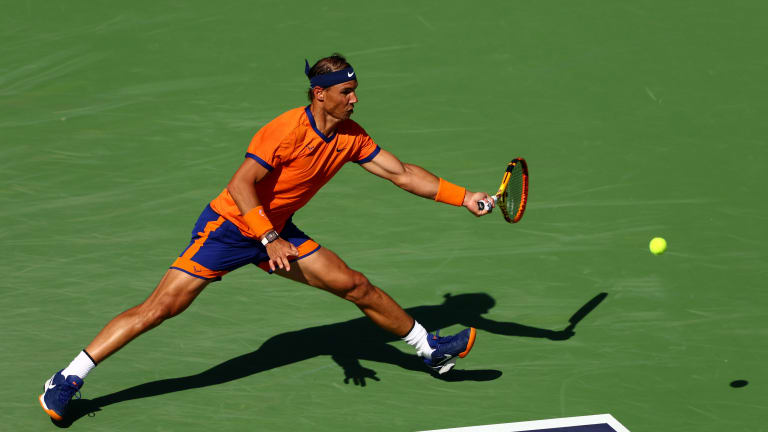Indian Wells, USA
Rafael Nadal struck a complicated balance between safety and risk to beat big-serving Reilly Opelka at Indian Wells
By Mar 17, 2022Indian Wells, USA
Mackenzie McDonald is paying the college tennis experience forward with a new fund
By Mar 17, 2025Indian Wells, USA
Mirra Andreeva and Jack Draper win breakthrough titles at Indian Wells: What did we just witness?
By Mar 17, 2025Indian Wells, USA
Jack Draper's run through Indian Wells concludes with his first ATP Masters 1000 title
By Mar 16, 2025Indian Wells, USA
Holger Rune vs. Jack Draper: Where to Watch, Indian Wells Preview, Betting Odds
By Mar 16, 2025Indian Wells, USA
Holger Rune reaches first Indian Wells final over Daniil Medvedev
By Mar 15, 2025Indian Wells, USA
Mirra Andreeva vs. Aryna Sabalenka: Where to Watch, Indian Wells Preview, Betting Odds
By Mar 15, 2025Indian Wells, USA
Mirra Andreeva, 17, advances to Indian Wells final, beating Iga Swiatek in chilly conditions
By Mar 15, 2025Indian Wells, USA
Ruthless Aryna Sabalenka storms past Madison Keys, 6-0, 6-1, in semifinals of Indian Wells
By Mar 15, 2025Indian Wells, USA
Carlos Alcaraz vs. Jack Draper: Where to Watch, Indian Wells Preview, Betting Odds
By Mar 15, 2025Rafael Nadal struck a complicated balance between safety and risk to beat big-serving Reilly Opelka at Indian Wells
“I just feel it’s important to know yourself, and in the pressure moments play with these shots that you feel more confident,” said Rafa after a quietly, thoughtfully, masterful performance.
Published Mar 17, 2022
Advertising
Advertising

Reilly Opelka pushed Rafael Nadal with his power, but Rafa found ways to push back.
© Getty Images